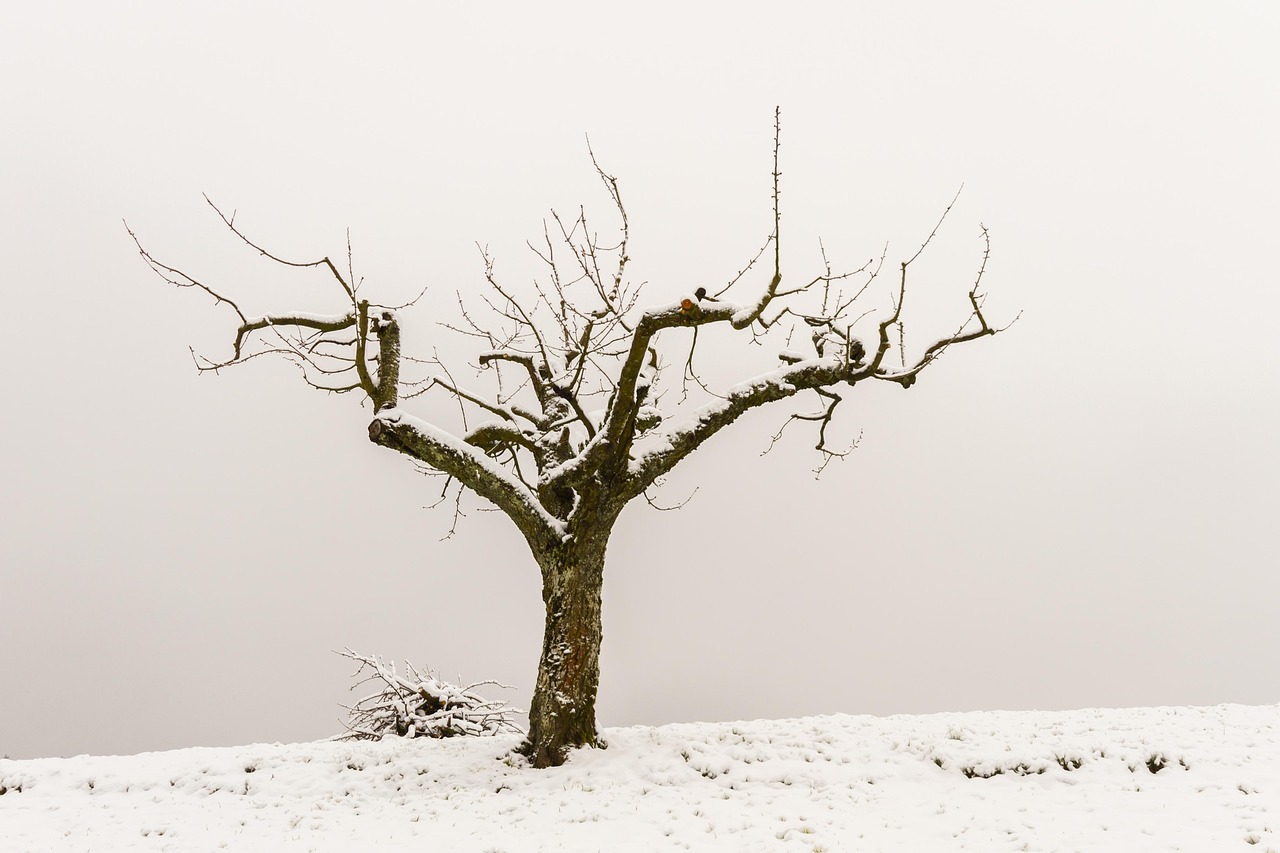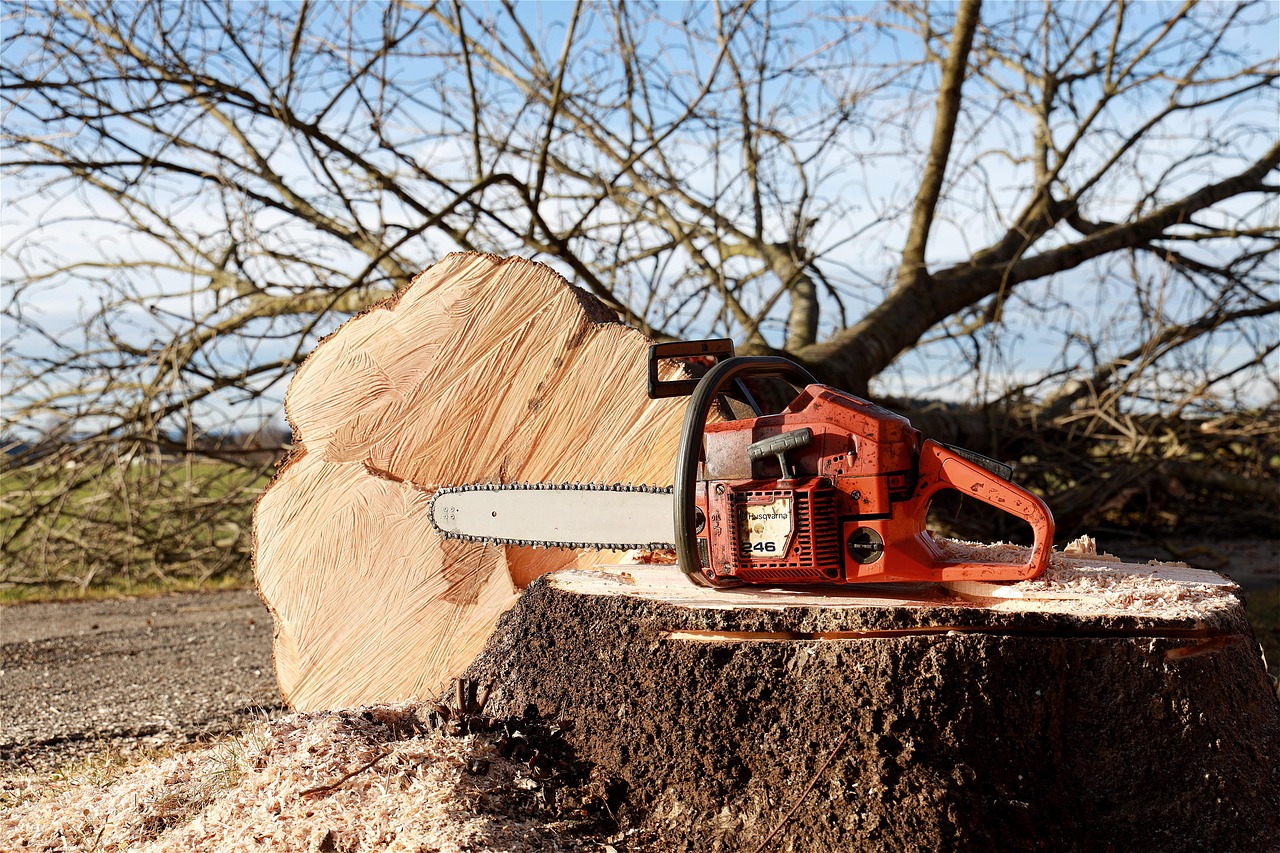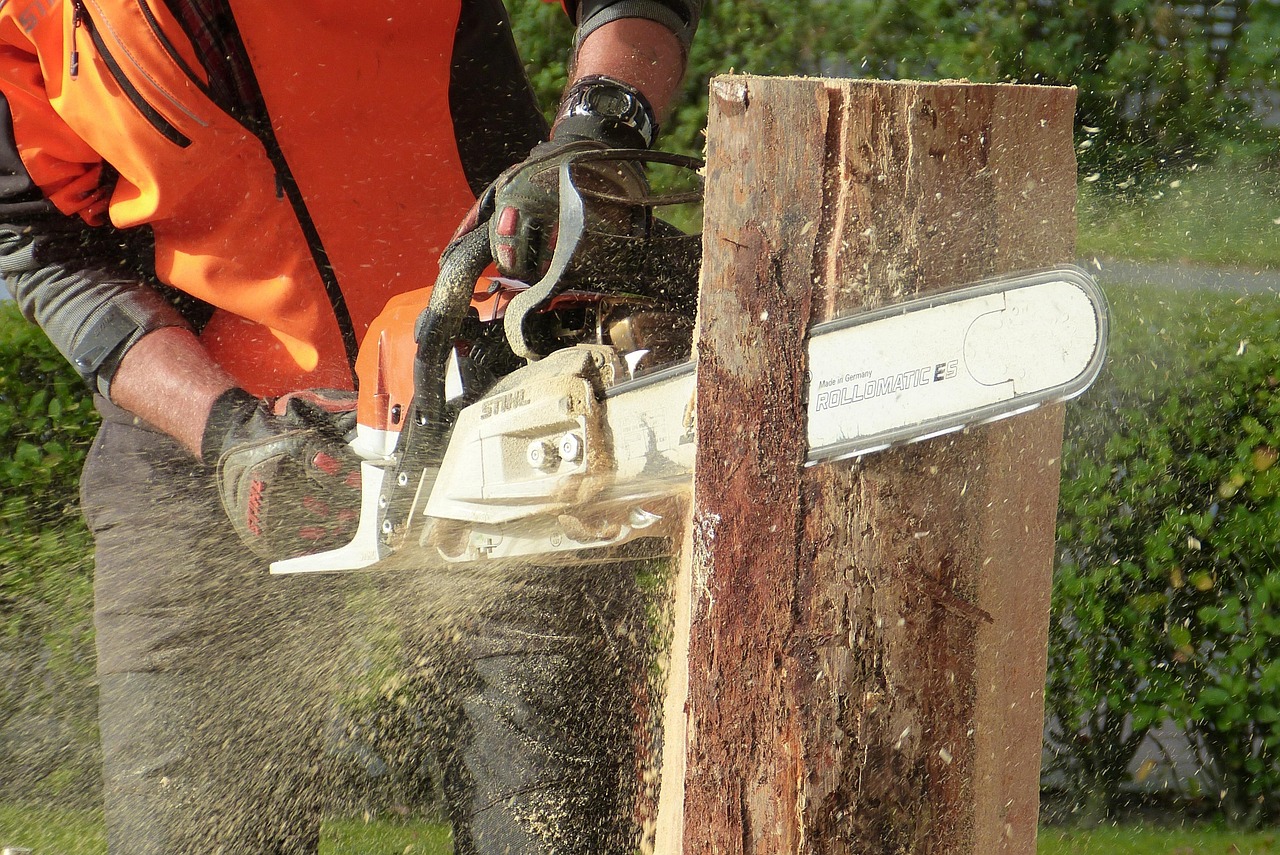Tree pruning is an essential practice that helps improve natural light inside homes by removing excess branches and foliage. This not only enhances the aesthetic appeal of the property but also allows sunlight to penetrate deeper into living spaces, creating a brighter and more inviting atmosphere.
Many homeowners overlook the importance of tree maintenance, particularly in relation to the light entering their homes. Trees can significantly impact the indoor environment. While they provide shade and reduce energy costs during hot months, overgrown trees can block essential sunlight, making interior spaces dark and uninviting. Proper pruning techniques can optimize light levels while maintaining the health and beauty of trees.

Understanding the right time and method for pruning is crucial. Trees have specific growth cycles, and pruning at the wrong time can harm them. It is essential to know which branches to remove for maximum light exposure while ensuring that the tree remains healthy and vibrant.
Benefits of Tree Pruning
Tree pruning offers numerous advantages beyond just improving natural light in homes. Here are some key benefits:
- Enhanced Aesthetics: Regular pruning improves the overall appearance of trees, making them look well-kept and appealing.
- Increased Sunlight: Removing excess branches allows more sunlight to reach windows and interiors.
- Improved Tree Health: Pruning can prevent diseases by removing dead or diseased branches.
- Safety: Trimming back branches reduces the risk of falling limbs during storms or high winds.
- Better Airflow: Thinning trees encourages better air circulation, which can help prevent mold and mildew.
Additionally, a well-pruned tree can have a positive effect on property values. Homes with well-maintained landscapes are often more attractive to potential buyers. Therefore, investing time in tree care can yield significant returns.

When to Prune Trees
The timing of tree pruning is crucial for both the tree’s health and the effectiveness of light improvement. The best time to prune generally depends on the type of tree, but there are some general guidelines:
| Type of Tree | Best Time to Prune | Reason |
|---|---|---|
| Deciduous Trees | Late Winter to Early Spring | Before new growth starts |
| Evergreen Trees | Late Spring to Early Summer | Avoid stress during winter |
| Flowering Trees | After Flowering | Avoid removing buds |
| Fruit Trees | Winter Dormancy | Encourage healthy growth and fruit production |
Pruning during dormancy (winter) is often recommended for many tree types because it minimizes stress on the tree. However, for flowering trees, pruning after flowering ensures that you do not remove potential blooms for the next season. Each tree species may have unique requirements, so it is essential to research or consult with a professional arborist.
Techniques for Effective Pruning
To maximize light penetration while maintaining tree health, various pruning techniques can be employed. Here are some common methods:

- Crown Thinning: This method involves selectively removing branches throughout the crown of the tree to reduce density while improving light access.
- Crown Raising: Involves removing lower branches to raise the tree’s canopy, allowing more light to reach windows and interiors.
- Crown Reduction: Reduces the size of the tree by trimming back larger limbs. This technique helps maintain the shape while allowing more light through.
- Deadwooding: The removal of dead or diseased branches that not only blocks light but also poses a risk to health and safety.
Understanding these techniques will help homeowners make informed decisions about how to prune their trees effectively. Each method has its purpose and should be used based on individual tree needs and desired outcomes.
Proper tools are also essential for effective pruning. Using sharp, clean tools reduces damage to the tree and promotes quicker healing. Some commonly used tools include pruning shears, loppers, and saws.
In summary, tree pruning is a vital practice that enhances natural light within homes while promoting overall tree health. Understanding the benefits, timing, and techniques involved in proper tree care will ensure that your home remains bright and inviting for years to come.

Choosing the Right Time for Pruning
Timing is critical when it comes to tree pruning. The right time can vary based on the specific type of tree, its growth patterns, and local climate conditions. Pruning at the appropriate season can enhance the tree’s ability to heal, promote healthy growth, and maximize light exposure.
Seasonal Considerations
Different seasons offer unique advantages for pruning trees. Here are some key aspects to consider:
- Winter Dormancy: Many trees enter a dormant phase during winter. Pruning in this period minimizes stress and allows the tree to heal before spring growth begins.
- Spring Growth: For certain species, pruning just before new growth can encourage a more vigorous bloom and ensure better light penetration.
- Summer Maintenance: Light pruning in summer can help control growth and enhance airflow, which is beneficial for overall tree health.
- Post-Bloom for Flowering Trees: Removing spent blooms after flowering encourages new growth without sacrificing future blooms.
Understanding your local climate can also guide when to prune. In warmer areas, trees may have different growth cycles compared to regions with colder winters. Always consider local guidelines and consult with an arborist if unsure.
Identifying Trees in Need of Pruning
Not all trees require the same level of care. Some signs indicate that a tree may need pruning, particularly if you aim to improve natural light inside your home. Recognizing these signs early can prevent issues from escalating.
Common Indicators
- Overgrown Canopies: If branches extend too close to windows or roofs, it may be time to prune.
- Dead or Dying Branches: Look for branches that are brown or brittle. These should be removed promptly to prevent disease spread.
- Crossing Branches: Branches that rub against each other can cause wounds, making the tree vulnerable to pests and diseases.
- Pest Infestations: If you notice signs of pest activity or disease, pruning can help remove affected areas and improve overall health.
Regular inspection of trees can help homeowners stay ahead of potential problems. A proactive approach ensures that trees remain healthy while allowing maximum sunlight to enter living spaces.
Professional vs. DIY Pruning
Homeowners often wonder whether they should prune their trees themselves or hire a professional arborist. Both options have their merits, and the choice often depends on various factors, including the size and type of tree, as well as personal skill level.
When to Consider Professional Help
- Large Trees: If a tree is particularly large or tall, it may be unsafe to prune without professional equipment and expertise.
- Complex Trimming Needs: Trees that require specialized cuts or techniques are best handled by professionals who understand the nuances of tree biology.
- Pest or Disease Issues: If a tree shows signs of serious pest infestations or diseases, consulting an arborist is essential for proper treatment and care.
- Lack of Time or Experience: Homeowners who are busy or lack pruning experience may find it easier to hire a professional to ensure quality work.
Benefits of DIY Pruning
For those who feel comfortable with basic tools and techniques, DIY pruning can provide several benefits:
- Cost Savings: Handling pruning yourself can save money compared to hiring a professional service.
- Satisfaction: Many homeowners take pride in maintaining their landscapes and enjoy the process of caring for their trees.
- Control Over Technique: DIY pruning allows you to use personal judgment about how much to trim and which specific branches to remove.
If opting for DIY methods, it is crucial to educate yourself on proper techniques and safety measures. Numerous resources are available online, including instructional videos and articles that can guide you through the process.
The Importance of Safety During Pruning
Safety should always be a priority when pruning trees. Improper techniques or equipment can lead to injuries or damage to the tree. Here are some important safety tips:
- Use Appropriate Gear: Always wear safety goggles, gloves, and sturdy footwear when pruning to protect yourself from falling debris.
- Ladder Safety: If using a ladder, ensure it is stable and placed on level ground. Never overreach while on a ladder.
- Know Your Limits: If a branch is too high or difficult to reach safely, consider hiring a professional instead of risking injury.
- Keep Tools Maintained: Ensure tools are clean and sharp to make precise cuts that minimize damage to the tree.
By following these guidelines, homeowners can safely prune their trees while enhancing natural light in their homes, creating a brighter and more welcoming atmosphere indoors.
Common Tree Types and Their Pruning Needs
Understanding the specific pruning needs of different tree species is essential for effective maintenance and maximizing natural light. Each type of tree has distinct characteristics that influence how and when it should be pruned. Below are some common tree types along with their unique pruning requirements.
Deciduous Trees
Deciduous trees are known for shedding their leaves in the fall. These trees generally benefit from pruning during their dormant period in late winter or early spring. This timing allows homeowners to see the tree’s structure clearly and make informed decisions about which branches to trim.
- Examples: Oak, Maple, Birch, and Elm.
- Pruning Focus: Remove dead or crossing branches, thin out crowded areas, and shape the tree for better light penetration.
Evergreen Trees
Evergreen trees retain their foliage year-round. Pruning these trees is typically done in late spring or early summer, after new growth has emerged. This practice helps maintain their shape while allowing sunlight to filter through the branches.
- Examples: Pine, Spruce, Fir, and Cedar.
- Pruning Focus: Thin out overly dense areas and remove damaged branches to promote airflow and light access.
Flowering Trees
Flowering trees usually have specific pruning times based on their blooming cycle. Pruning should occur either after flowering or in late winter, depending on the species.
- Examples: Dogwood, Cherry, and Magnolia.
- Pruning Focus: Deadhead spent flowers to encourage new blooms and remove unhealthy branches.
Fruit Trees
Fruit trees require careful pruning to promote healthy fruit production. The best time to prune is during the winter dormancy phase to enhance fruit yield in the spring and summer.
- Examples: Apple, Pear, and Peach.
- Pruning Focus: Thin out excessive growth, shape the canopy for sunlight penetration, and remove any diseased wood.
The Role of Tree Canopy in Light Penetration
The canopy of a tree plays a significant role in determining how much light enters your home. Understanding the structure of the canopy can help homeowners make better pruning decisions.
Crown Structure
The crown of a tree consists of its upper branches and leaves. A well-structured crown allows sunlight to pass through more effectively. Here are some important points about crown structure:
- Dense Crowns: A dense crown can block light from reaching windows, resulting in darker interiors.
- Open Canopies: Open canopies allow more light to filter through, improving indoor brightness.
- Layered Growth: Trees with layered growth patterns can benefit significantly from selective thinning to enhance light access.
Canopy Thinning Techniques
Selective thinning is a technique used to open up the canopy while maintaining overall tree health. Here are some methods to consider:
- Selective Branch Removal: Choose specific branches that are overly crowded or growing inwards towards the trunk.
- Reducing Height: If a tree is too tall, consider reducing its height to allow more light to reach lower branches and windows.
- Crown Raising: Remove lower limbs to elevate the canopy, allowing light to penetrate further into your yard and home.
Impact of Tree Placement on Natural Light
The placement of trees in relation to your home significantly affects the amount of natural light that enters indoor spaces. Strategic placement can enhance lighting while still providing shade when needed.
Considerations for Tree Placement
- Avoiding Overcrowding: Planting trees too close together can lead to competition for sunlight and create dense canopies that block light.
- Distance from Windows: Position trees away from windows to minimize shade while still enjoying their benefits.
- Orientation: Consider the sun’s path throughout the day when planting trees. South-facing windows benefit from unobstructed sunlight.
Landscape Planning Tips
Incorporating trees into your landscape plan can help optimize natural light. Here are some tips:
- Diverse Planting: Utilize a mix of tree species with varying heights and growth habits to create a layered landscape that maximizes light access.
- Regular Maintenance: Schedule regular pruning to keep trees healthy and ensure they do not grow too large for their designated space.
- Avoiding Blocking Structures: Be cautious of placing structures like fences or other tall plants that could further obstruct sunlight.
A well-thought-out landscape plan not only enhances the beauty of your property but also improves the quality of natural light inside your home. By considering tree placement, species selection, and ongoing maintenance, homeowners can create a bright and inviting environment indoors.
Environmental Benefits of Tree Pruning
Beyond improving natural light inside homes, tree pruning offers several environmental benefits. Healthy trees contribute positively to the ecosystem and can help combat climate change. Here are some environmental advantages of proper tree care:
- Carbon Sequestration: Trees absorb carbon dioxide from the atmosphere, helping to reduce greenhouse gases and mitigate climate change effects.
- Air Quality Improvement: Trees filter pollutants from the air, improving overall air quality and making urban environments healthier.
- Biodiversity Support: Well-maintained trees provide habitats for various wildlife species, supporting local biodiversity.
- Soil Erosion Prevention: Tree roots help stabilize soil, preventing erosion and maintaining the integrity of surrounding landscapes.
- Temperature Regulation: Trees provide shade, reducing temperatures in urban areas and lowering energy costs for air conditioning.
By understanding these benefits, homeowners can appreciate the broader impact of their tree care practices. Pruning not only enhances light and aesthetics but also contributes to a healthier planet.
The Economic Value of Pruning
Investing in tree pruning is not just about aesthetics or environmental benefits; it also has economic advantages. A well-maintained landscape can significantly increase property value. Here are some economic considerations:
- Increased Property Value: Homes with healthy trees and well-kept landscapes often sell for higher prices compared to those without.
- Lower Energy Costs: Strategically pruned trees can provide shade, reducing cooling costs in the summer and lowering energy bills.
- Reduced Risk of Damage: Regular pruning minimizes the risk of falling branches during storms, protecting your home and property from potential damage.
- Aesthetic Appeal: A beautiful landscape enhances curb appeal, making a property more attractive to potential buyers.
By considering these economic factors, homeowners can view tree pruning as a valuable investment that pays off in multiple ways.
Community Benefits of Tree Pruning
The impact of tree care extends beyond individual properties. Healthy trees contribute to community well-being. Here are some community benefits associated with proper tree maintenance:
- Improved Neighborhood Aesthetics: Well-pruned trees enhance the overall appearance of neighborhoods, fostering a sense of pride among residents.
- Increased Property Values in the Community: As individual properties improve, the entire neighborhood benefits, leading to higher values across the board.
- Cultural and Recreational Spaces: Trees in parks and public spaces provide shade and beauty, promoting outdoor activities and community gatherings.
- Environmental Education: Engaging the community in tree care initiatives can foster environmental awareness and stewardship among residents.
Communities that prioritize tree health often experience improved social cohesion and a stronger connection among residents, making tree care a community-wide responsibility.
Final Thoughts
Tree pruning is a multifaceted practice that offers numerous benefits for homeowners, the environment, and communities as a whole. By focusing on the timing, techniques, and specific needs of different tree species, homeowners can effectively enhance natural light within their homes while promoting tree health.
The aesthetic appeal and economic advantages of well-maintained trees cannot be overstated. With proper care, trees can transform spaces, create inviting atmospheres, and contribute positively to property values. Additionally, the environmental benefits of healthy trees play a crucial role in combating climate change and fostering biodiversity.
Ultimately, embracing tree pruning as a part of regular home maintenance not only brightens living spaces but also supports a sustainable future for both communities and the planet. Homeowners are encouraged to take proactive steps towards maintaining their trees through regular pruning, which will ensure they remain healthy, beautiful, and beneficial for generations to come.
